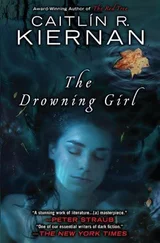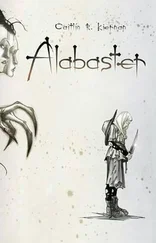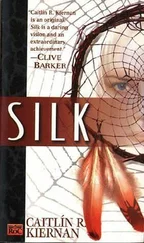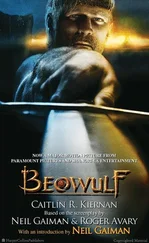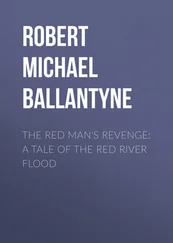Caitlin R. Kiernan - The Red Tree
Здесь есть возможность читать онлайн «Caitlin R. Kiernan - The Red Tree» весь текст электронной книги совершенно бесплатно (целиком полную версию без сокращений). В некоторых случаях можно слушать аудио, скачать через торрент в формате fb2 и присутствует краткое содержание. Жанр: Ужасы и Мистика, на английском языке. Описание произведения, (предисловие) а так же отзывы посетителей доступны на портале библиотеки ЛибКат.
- Название:The Red Tree
- Автор:
- Жанр:
- Год:неизвестен
- ISBN:нет данных
- Рейтинг книги:3 / 5. Голосов: 1
-
Избранное:Добавить в избранное
- Отзывы:
-
Ваша оценка:
- 60
- 1
- 2
- 3
- 4
- 5
The Red Tree: краткое содержание, описание и аннотация
Предлагаем к чтению аннотацию, описание, краткое содержание или предисловие (зависит от того, что написал сам автор книги «The Red Tree»). Если вы не нашли необходимую информацию о книге — напишите в комментариях, мы постараемся отыскать её.
The Red Tree — читать онлайн бесплатно полную книгу (весь текст) целиком
Ниже представлен текст книги, разбитый по страницам. Система сохранения места последней прочитанной страницы, позволяет с удобством читать онлайн бесплатно книгу «The Red Tree», без необходимости каждый раз заново искать на чём Вы остановились. Поставьте закладку, и сможете в любой момент перейти на страницу, на которой закончили чтение.
Интервал:
Закладка:
There was a great deal more blood. And something broken lying on the stone slab at the foot of the tree. I made myself look at it. It would have been cowardice to turn away, and I hope I can at least say I am not a coward. The rabbit’s throat had been cut, and its belly torn open. The wet, meaty lumps of organs and entrails decorated old Hobbamock’s altar, and there were also a few smears of blood on the rough, reddish-gray bark of the tree itself. My legs felt weak then, and though I don’t actually recall having sat, I remember standing up again sometime later. I cannot say how long I rested beneath the tree, gazing into those gigantic branches, making my eyes return again and again to Constance’s sacrifice. It may have been as long as an hour. It may have been only half that. By the time I left, the dead rabbit had begun to attract a cloud of buzzing flies, and I understood that the insects, and the maggots they heralded, were also there to serve the tree, in a cycle of life and death and rebirth that I could only dimly comprehend.
Whatever drove Joseph Fearing Olney to murder all those women and then bury choice bits of them beneath the oak, and whatever had finally driven John Potter insane centuries before — whatever it was that had taken Susan Ames and then her husband, and whatever malignancy had at last left Charles Harvey with no choice but to end his own life, I sat there before it, clutching the empty plastic spool that had recently held 150 yards of fishing line. I was sure that the tree would not allow me to leave. Or that, having seen it stripped of any pretense at being merely a tree, I would find myself incapable of walking away. Here was my burning bush, or the Gorgon’s face. Here was epiphany and revelation and, if I so desired, the end of self. So many had been undone before me, and I knew that secret history, and now I also knew the why of the thing.
But I did find the requisite will to leave the tree. Or it allowed me to leave. I’ll likely never know which, and, likely, it makes no difference.
By the time I got back to the house, it was a quarter past two in the afternoon. I could hear Constance moving about upstairs. I considered trying, again, to get her to open the attic door, and I wondered if we’d passed one another somewhere in the woods. If she’d been headed back, following some alternate route to the one she’d marked with the fishing line, as I was picking my way towards the tree. I wondered where she’d gotten the rabbit. And then I went to the bathroom, undressed, searched my skin and hair for deer ticks (there were none), and took a hot shower.
I still have not seen Constance. I have not heard her come down the stairs. But I was in bed early last night, utterly exhausted, and then I slept late. She might have come down then. She might have stood in the doorway of my bedroom, watching me dream and trying to decide what is to become of the both of us, and by whose hand. She did a messy job on the rabbit.
Three things.
First, about half an hour ago I reached into the front right pocket of my jeans and discovered there a section of jawbone, maybe two and half inches long, sporting two molars. That the jaw is human is undeniable. One of the teeth even has a gold filling. The bone is stained a dark brown, and there is clay and soil packed tightly into various cracks and into both the severed ends, partially clogging the porous interior. I held it awhile, as the initial shock faded, turning the fragment over and over in my hands, straining in vain to remember having picked it up and put it into my pocket. Then I stopped trying, and set it on the kitchen table next to the typewriter. I assume, in the absence of any other viable explanation, or any evidence to the contrary, that I must have discovered this scrap of jaw while sitting beneath the tree yesterday. That I must have picked it up (and maybe, when I found it, the bone was even still half buried in the ground), dusted it off, and then slipped it into my pocket. The fact that I remember doing none of these things does not strike me as having any bearing, any relevance, on whether or not this is actually what transpired.
Sitting, staring at that dirty timeworn piece of bone and the two dingy teeth still plugged tightly into their sockets, I thought about going to the closet and retrieving Harvey’s manuscript, so I could read back over the circumstances of the Olney killings. But I didn’t. I put those pages away, and I mean them to stay put away. Regardless, I recall the peculiarities surrounding the recovery of the decapitated heads and other skeletal remains that, between 1922 and 1925, the murderer had buried around the base of the red tree. Chiefly, that not all of the heads could be located, despite the fact that Olney had, in his journal, gone so far as to draw a map of the area around the oak, indicating each spot where he’d deposited bits of his victims. And, also, that all the heads that were recovered, even those of the most recent victims, impressed the medical examiner handling the case as having been in the ground much longer than Olney claimed. No trace of flesh or hair was left, and Harvey writes that the coroner commented that the bone looked more like what one would expect from the excavation of an Indian grave, hundreds of years old, than from a recent burial. There was some speculation, at the time, that the earth below the tree might have been unusually acidic, or more amenable to some sort of grub or insect that may have picked the bones clean. We call this clutching at straws. And now I’m typing these words, these sentences, these paragraphs, stating it all plainly in black and white, and it looks more absurd than just about anything else I’ve written down since coming to Rhode Island and first laying eyes on the tree.
And, as long as we’re talking absurdities, the more I stare at the chunk of jawbone from my pocket, the more I think about tales of fairy gifts. Or, rather, the perils of accepting any manner of food or drink or gift while within the perimeter of a fairy circle. The base of the tree is round, and so many people have drawn circles about it, repeatedly making of it a mystery (to once again paraphrase Joseph Campbell), or merely underscoring the mystery it has always been. Olney swore that these hills were hollow.
Constance made her offering yesterday, and, shortly afterwards, I sat beneath the heavy green boughs, marveling at the “face” of gods laid bare. And now I find that I came away with a grisly souvenir that I cannot recollect having found, much less having decided it would be a good idea to bring back with me.
And here’s the second thing.
Reading my last entry, I see that twice now, since I began keeping this journal, I have written of experiencing epiphany in the presence of the red tree. Indeed, the second instance seems like little more than a revision, a better-worded second draft, of the first instance (July 6, 2008 [10:27 p.m.]). In its own way, I find this repetition as inexplicable and jarring as the jawbone from my jeans pocket. Or “Pony.” Back in July, when we tried to reach the tree and failed, I first saw the tree for what I now believe it to be. I wrote, “. . it seemed to me more than a tree. . I saw wickedness dressed up like a tree.” But, then, in an entry I made only a few hours ago, writing of my latest trip to the oak, I wrote, “I looked upon it now as though I was seeing the red oak for the first time. And I wondered how I ever could have mistaken it for anything so uncomplicated and inconsequential as a mere tree .” Also, in both cases, I attempt to illustrate or elaborate on my revelation with a string of metaphors and similes.
Now, if the first “epiphany” were genuine, it would preclude the occurrence of a second, would it not? And if my narrative is to be trusted — if my goddamn memories are something upon which I can continue to rely —then I must find some way to account for and reconcile this redundancy. And it is a redundancy. I don’t see how mere forgetfulness could ever possibly account for this repetition.
Читать дальшеИнтервал:
Закладка:
Похожие книги на «The Red Tree»
Представляем Вашему вниманию похожие книги на «The Red Tree» списком для выбора. Мы отобрали схожую по названию и смыслу литературу в надежде предоставить читателям больше вариантов отыскать новые, интересные, ещё непрочитанные произведения.
Обсуждение, отзывы о книге «The Red Tree» и просто собственные мнения читателей. Оставьте ваши комментарии, напишите, что Вы думаете о произведении, его смысле или главных героях. Укажите что конкретно понравилось, а что нет, и почему Вы так считаете.

